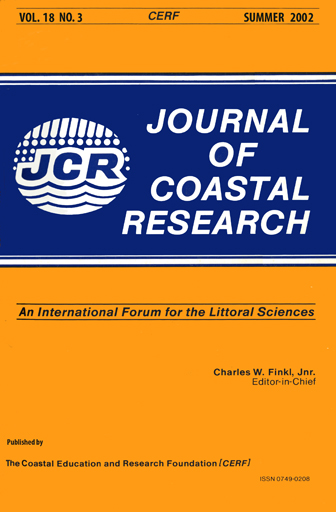Subannual Erosion and Retreat of Cohesive Till Bluffs, McNab's Island, Nova Scotia
Keywords:
Drumlin bluffs, coastal stability, vane shear strength, till water content, storm waves, storm surges, precipitation, spray, stepwise multiple regressionAbstract
The roles of variable geotechnical properties and meteorologic and oceanographic conditions in contributing to the subannual variance in erosion, failure and retreat of cohesive till bluffs have been investigated by comparison of results of 18 months of observations and measurements of bluff erosion, retreat, water content and shear strength with wind speed and direction, water level, wave height, precipitation and temperature. Shear strength of the unconsolidated cohesive till inversely depends on water content which is correlated to erosion and may be increased by precipitation and spray. In stepwise multiple regression, high winds from the direction of longest fetch, high water levels and high precipitation all significantly contribute to erosion. Failures and maximum rates of erosion tend to occur during storms when shear strength (resisting force) is low, and wave activity superimposed on elevated water levels results in increased incident energy (assailing force) at the bluff toe and over till exposures in the foreshore. The assailing and resisting forces are thus inversely related during storms such that thresholds of erosion can be easily exceeded. Erosion occurs at the bluff toe in response to both decreased resisting force and increased assailing force but, at the upper bluff edge, failures and retreat occur mainly due to decreased resisting force with only indirect impacts from increased wave activity. The relative importance of till properties and storms in contributing to subannual bluff erosion and retreat is therefore variable over the bluff profile which may contribute to longer term morphologic evolution of cohesive bluffs.


